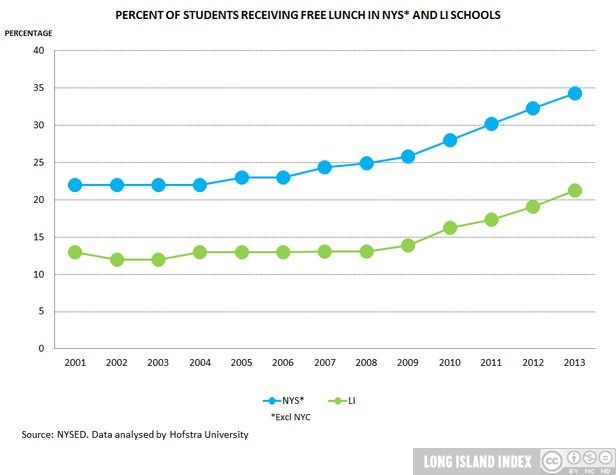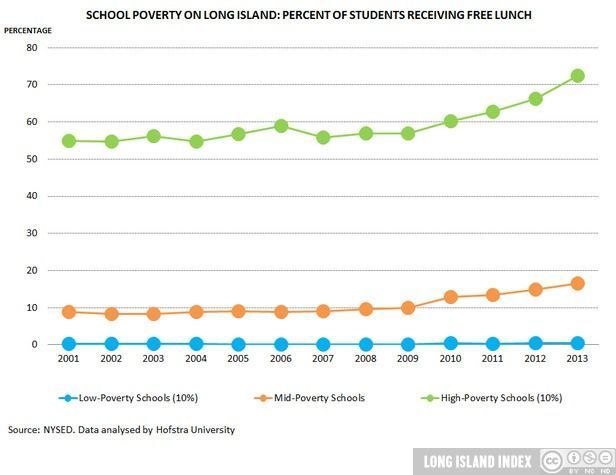While overall poverty levels on Long Island are lower than NYS as a whole, poverty in Long Schools is increasing.
Why is this important?
Scholarly research shows that poverty is the most significant factor in determining how a child will perform in school. A child’s own family income is central, but it is not the whole story. The socioeconomic status of the community in which a child lives and goes to school is also important. Concentrated poverty—where many families in a certain area are poor—is far more disadvantageous than individual poverty alone. A common measure of school poverty is the percentage of students in a school who are federally defined as eligible for free lunch. Using percent free lunch, schools can be thought of as “high” and “low” poverty. In “high poverty schools” many students receive free lunch and thus poverty is highly concentrated. In “low poverty schools,” few students receive free lunch.
How are we doing?
In 2013, 21% of students in Long Island schools received free lunch, below the NYS rate of 34%. The Long Island rate has increased substantially from its pre-recession level of about 13% (a 62% increase of 8 percentage points). There are large disparities on Long Island, in the concentration of poverty. In 2013, the 10% of schools classified as “low-poverty” had very few students qualify for free lunch (just above 0%), middle-poverty schools (80% of all schools) averaged about 16% of students qualifying for free lunch, and the 10% of schools classified as high-poverty schools had almost 73% of their students receiving free lunch. Since 2001, low-poverty schools have remained relatively flat with respect to the percent of students receiving free lunch (Less and one half of one percent)However, between 2001 and 2013, high-poverty schools saw an increase in the percent of students receiving free lunch from 55% to 73% Thus, the gap between “rich” and “poor” schools widened considerably. Most of the upward shift in the percent of students in poverty for high-poverty and mid-poverty schools occurred since the “Great Recession” in 2007.

